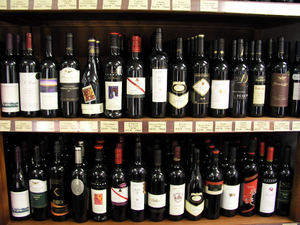Texas BYOB restaurants are a lot of fun. They give you a chance to bring your own favorite wine, beer or spirits to a meal, thereby making sure the drink you have with your dinner is a drink you enjoy; they can also lower the cost of the meal itself. However, there is a certain BYOB etiquette that diners should follow when bringing their own bottle to a restaurant. Remember, BYOB is really a privilege, and as such you should respect the restaurant while doing so. While basic BYOB is the same no matter where you go to dine, there are differences in state laws regarding BYOB. Below is your guide to BYOB dining – Texas style.
First the legal part. Make sure the Texas restaurant you are going to BYOB to does not have a private club permit or a mixed beverage permit (this means they are licensed to serve distilled spirits, not just beer and wine.) It is illegal in Texas to BYOB to a restaurant or bar that has either of these permits. If you’re not sure, call and ask. Most BYOB restaurants will advertise themselves as such, or a simple phone call can clear this up. Texas restaurants with such permits will not allow you to BYOB, so it’s best to just know in advance.
It is legal to BYOB to a Texas restaurant or bar that has only a beer and wine permit, or one that has no permit to sell any type of alcohol. This does not mean, however, that the restaurant will allow you to do so. If the restaurant does permit BYOB, they may still charge you a fee – this is usually called a corkage fee, but they may charge it for any type of alcohol, not just wine. Texas restaurants may also charge set up fees, meaning they will bring the glass, ice, soda, etc., that you need for your mixed drink but you will be charged for them.
With that out of the way, let’s move on to some Texas BYOB etiquette.
If the Texas restaurant you are dining at has a wine permit and serves wine, don’t bring wine that is on the wine list. BYOB is your chance to enjoy a bottle of wine that you can’t get at the restaurant, not a chance to shave a few dollars off the bill. For example, if you know the restaurant doesn’t serve wines from Oregon or Washington, and that is what you really enjoy, bring along that bottle of Dundee Hills Chardonnay. But if the restaurant supports local wineries by serving some outstanding Texas wines, don’t BYOB of the same just to save five dollars off the bottle. One last caveat – some restaurants may actually prohibit you from BYOB of a wine they already offer.
Take a look at the restaurant’s menu if possible before hand. Many Texas restaurants have their menus on-line, or you can even stop by to check out the specials as well as the regular entrees. This will allow you to BYOB that will complement your meal. You don’t want to bring your favorite bottle only to discover the special that night is absolutely irresistible and clashes with your choice miserably.
Ask about the corkage fee. Some Texas restaurants don’t charge a corkage fee, some charge five dollars or so, but an expensive restaurant (or one that wants to discourage customers from bringing their own bottle) may charger $100 for corkage. You may not want to pay that much, especially if you are bringing a $30 bottle of wine.
Don’t forget to tip. It is good etiquette, and also just gracious, to tip based on the amount your bill would have been had you ordered a bottle of wine (or several beers, or a few mixed drinks) instead of BYOB. This is true even if you pay a corkage fee, although you can tip based on the difference.
Source list:
Personal experience
http://www.tabc.state.tx.us
http://www.snooth.com





